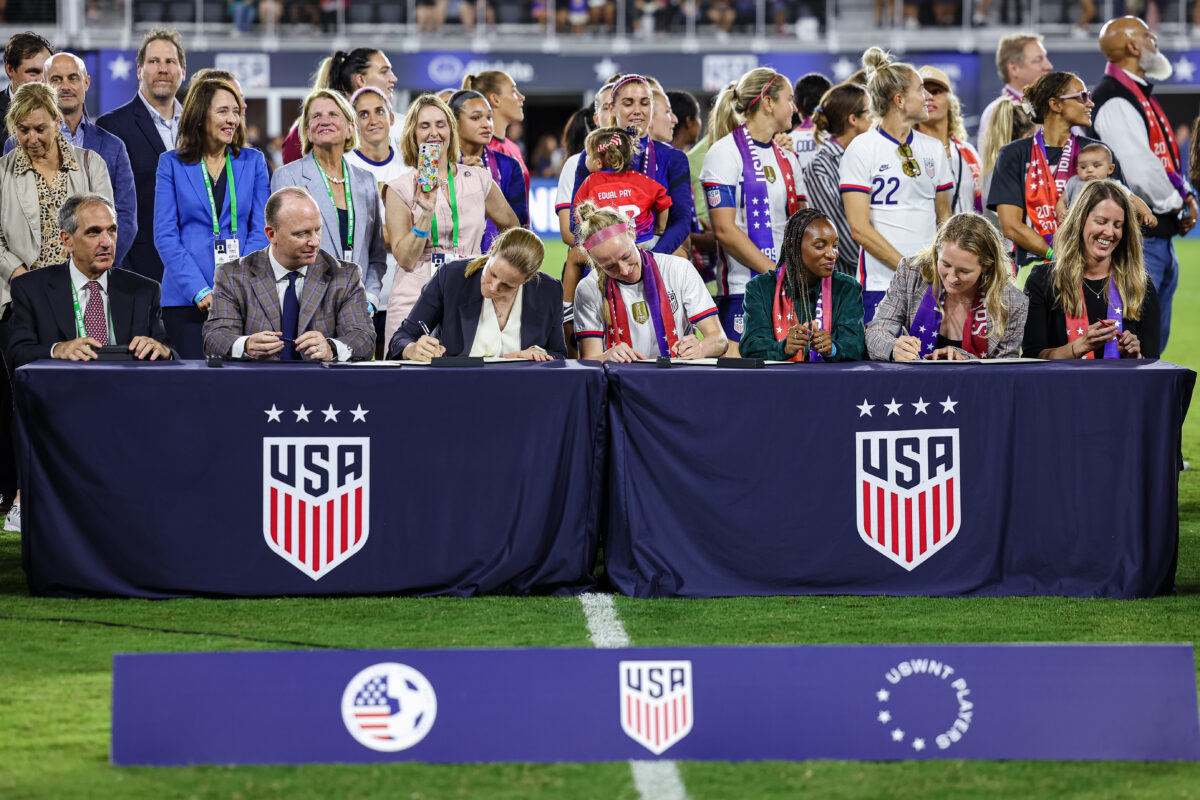Tuesday night was a culminations of a years-long fight for the U.S. women’s national team. But in spite of a real mood of celebration in the air at Audi Field, the USWNT was also eyeing what comes next.
Players past and present gathered on the pitch after a friendly win over Nigeria to sign a new collective bargaining agreement (CBA) with U.S. Soccer that guarantees equal pay for the USWNT and USMNT.
“This is a historic moment,” U.S. Soccer president Cindy Parlow Cone said after the game. “This has never been done before. The amount of time and energy, the blood, the sweat, the tears that we’ve all put into this to make this a reality. We wanted a celebration.”
The celebration was deserved. As Parlow Cone noted, the CBA was a first of its kind. Never before had a federation’s men’s and women’s teams agreed to evenly split World Cup prize money, which FIFA heavily slants in favor of the men.
U.S. Soccer may have been the first federation to equalize World Cup prize money, but it won’t be the last.
“Federations have already been reaching out,” USWNT captain Becky Sauerbrunn said. “We’ve actually been working with the [English] FA. They want to know what the CBA looks like, how it works. We’re willing to share all our ideas, all the mechanics of it.”

Parlow Cone said she’s also been fielding calls from other federations.
“A number of federations have reached out to us about: How did you do it? Can you help us do it? From the players to the executives in the different federations,” the U.S. Soccer president said.
Of course, the reason federations need help figuring out how to make the numbers work is the massive gulf between the prize money FIFA awards men’s and women’s World Cup teams. Solving the issue at its root means eliciting change from FIFA, not advising federations on budgetary gymnastics.
“There’s so much from a global perspective [that can be done],” Megan Rapinoe said when asked what the USWNT would focus on next.
“We’ve got the World Cup coming up next year. Sponsorship dollars, the amount FIFA puts into it, the whole infrastructure around the global game needs to increase so much.
“All the results are there. We can’t really do anything else. The 2019 World Cup was amazing, the Euros were amazing, Champions League was amazing.”
As the likes of Rapinoe and Sauerbrunn near the end of their USWNT careers, the onus will now fall on the younger players to continue advocating for women’s players both at home and abroad.
On the night the team’s new CBA was signed, Sam Coffey earned her first USWNT cap. The Portland Thorns rookie was filled with gratitude for what her predecessors accomplished, and was aware of the responsibility the next generation will carry with them.
“Wow it’s our responsibility to continue the fight, to help them in any way we can, not just be little mooching young players who just reap all the benefits of now getting equal paychecks,” Coffey said with a laugh, “but just continuing this fight that started so many years ago.”
